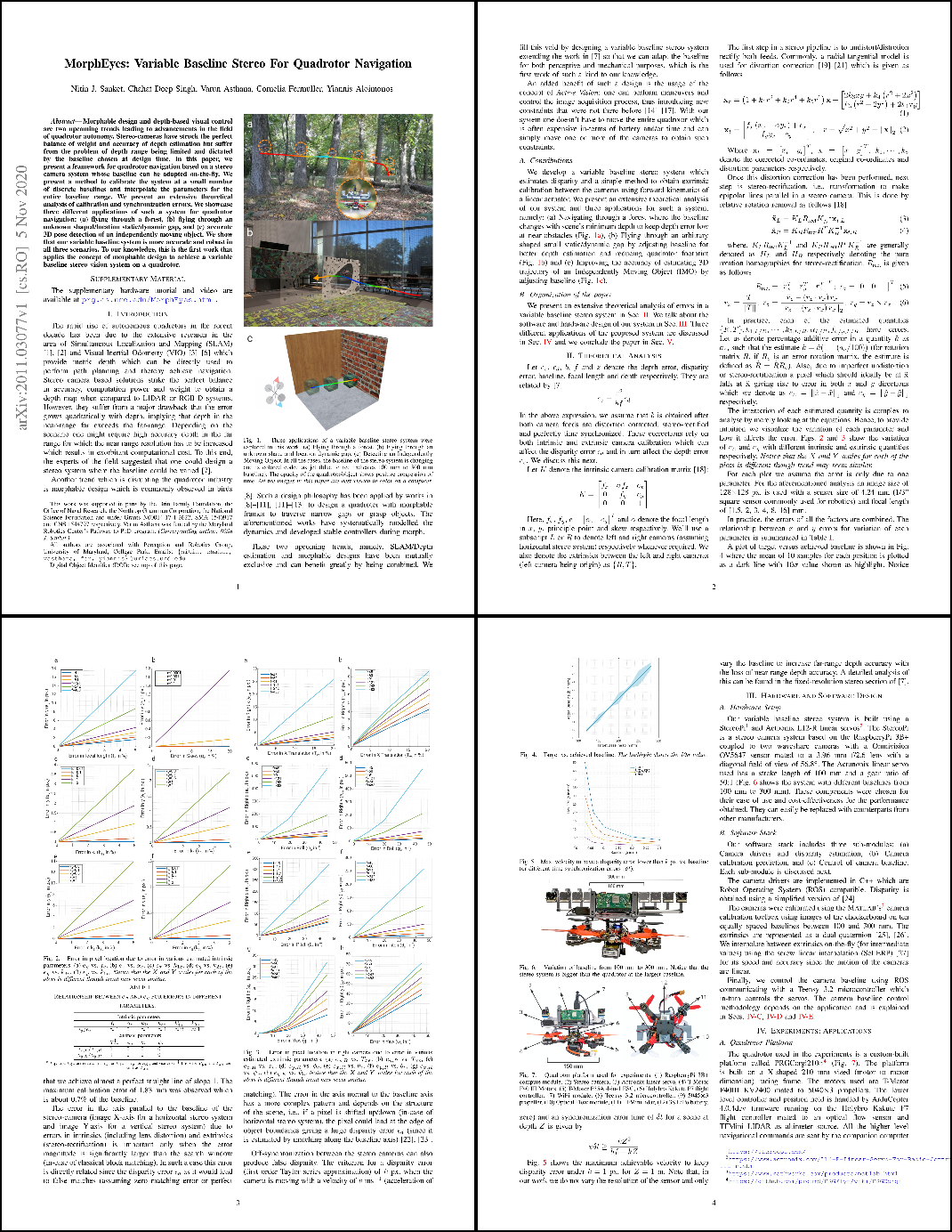Morphable design and depth-based visual control are two upcoming trends leading to advancements in the field of quadrotor autonomy. Stereo-cameras have struck the perfect balance of weight and accuracy of depth estimation but suffer from the problem of depth range being limited and dictated by the baseline chosen at design time. In this paper, we present a framework for quadrotor navigation based on a stereo camera system whose baseline can be adapted on-the-fly. We present a method to calibrate the system at a small number of discrete baselines and interpolate the parameters for the entire baseline range. We present an extensive theoretical analysis of calibration and synchronization errors. We show casethree different applications of such a system for quadrotor navigation: (a) flying through a forest, (b) flying through an unknown shaped/location static/dynamic gap, and (c) accurate 3D pose detection of an independently moving object. We show that our variable baseline system is more accurate and robust in all three scenarios. To our knowledge, this is the first work that applies the concept of morphable design to achieve a variable baseline stereo vision system on a quadrotor.

Figure: Three applications of a variable baseline stereo system were explored in this work. (a) Flying through a forest, (b) Flying through an
unknown shape and location dynamic gap, (c) Detecting an Independently
Moving Object. In all the cases, the baseline of the stereo system is changing
and is colored coded as jet (blue to red indicates 100 mm to 300 mm
baseline). The opacity of the quadrotor/object shows positive progression of
time. (d) Variation of baseline from 100 mm to 300 mm. Notice that the
stereo system is bigger than the quadrotor at the largest baseline.
